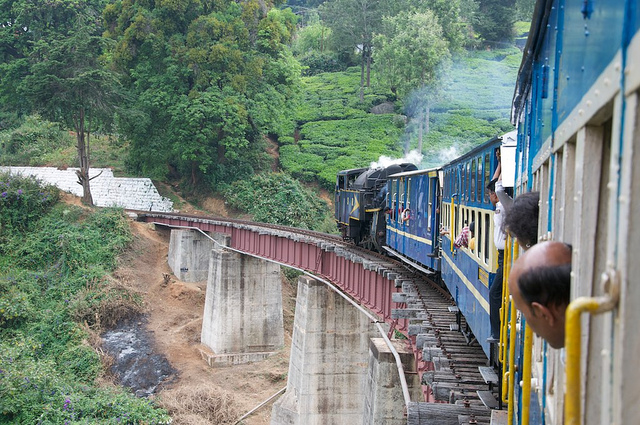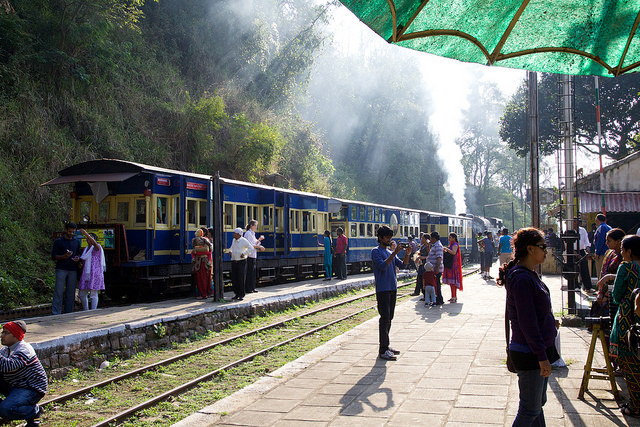The Nilgiri Mountain Railway in the jungle of Southern India has the steepest slope of any railway in Asia. What is the reason that a railway line was built through such difficult terrain?

As the name suggests, the Nilgiri Mountain Railway connects Mettupalayam on the plains of southern India with Ooty (or Udhagamandalam) in the mountains of the Nilgiris. The steepest sections of the line are 8.33 %, which obviously cannot be covered by a regular adhesion railway. The Nilgiri Mountain Railway therefore uses a rack and pinion system to make its way through the jungle of the Nilgiris.
History of the Nilgiri Mountain Railway
At the beginning of the 19th century, the Nilgiri Mountains were under British rule and soon found to have a pleasant climate compared with the tropical conditions of Southern India.
The Nilgiris became a getaway for people during the summer and on weekends. The government of the Madras Presidency, which was located in what is Chennai today, came to Ooty each year for 6 months from May to October and made the new settlement their summer capital.
Ooty developed into a major hill station and required transportation. Two roads from Mettupalayam were built to service the newly developing communities in the mountains. The Kotagiri Ghat Road and the Coonoor Ghat Road were built to reach the plateau between 1,800 m and 2,200 m above sea level.
As the popularity of the Nilgiris grew, additional hill stations such as Coonoor and Wellington developed. Tea plantations were built as well and the demand for transportation increased.
In 1854 the first proposals for a railway were made but it took until 1899 when the line was opened from Mettupalayam to Coonoor. Nine years later, in 1908 the first train reached Ooty.
Nilgiri Mountain Railway today
The 46 km long narrow gauge line is fully operational today. Historical steam engines service the line on the rack section between Mettupalayam and Coonoor, where diesel engines then take the trains to Ooty.
The uphill journey takes about five hours and is very popular with tourists both from India and abroad. Shortly after leaving the station at Mettupalayam, the train makes its way through the jungle on the steep slopes of the Nilgiris. In addition to the average gradient of about 4 % on the rack section, 16 tunnels and 250 bridges were built to traverse the challenging terrain.

The UNESCO granted World Heritage to three Mountain railway lines in India.
In addition to the Nilgiri Mountain Railway, the Kalka-Shimla Railway and the Darjeeling Himalayan Railway received this honor.
Not surprisingly, the three lines have some similarities. Both Shimla and Darjeeling were also summer residencies of the British governments and the railways were built to facilitate transportation to these hill stations.
All three survived the changes in transportation technology in the last century and are today an important factor in the regions economy as major tourist attractions.
Then sign up for our free email newsletter to get all our new posts right to your inbox.
